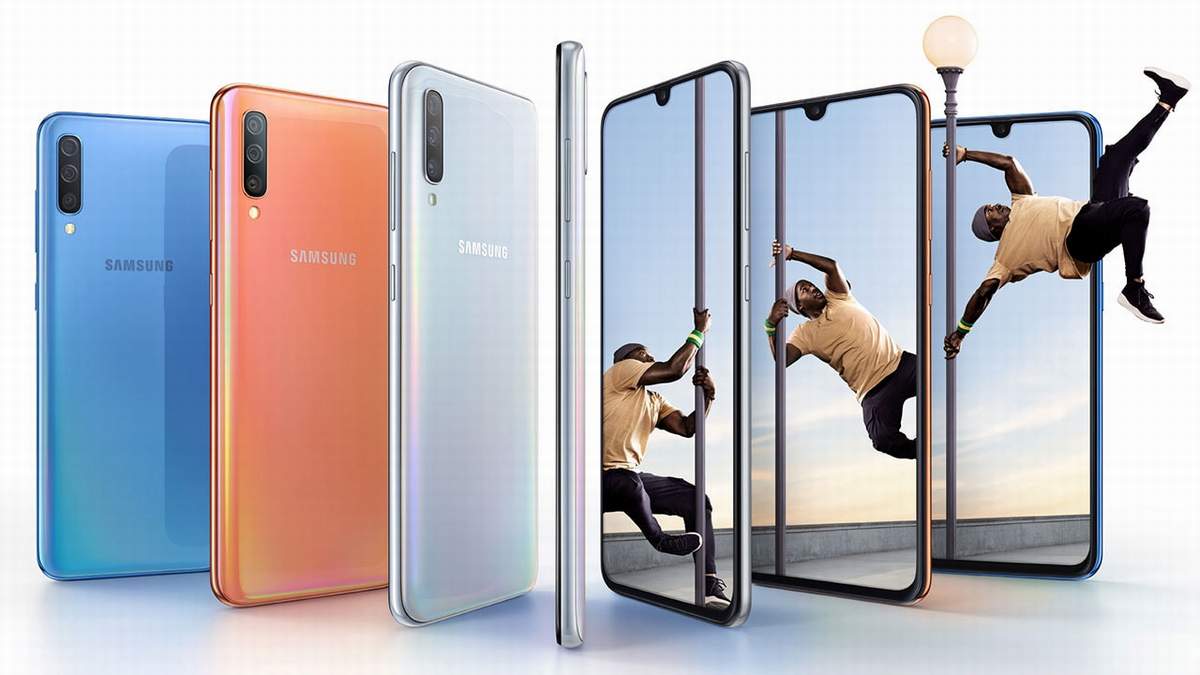Tablet Apple iPad Pro 11: advantages and disadvantages

On October 30, 2018, at the “There’s More in the Making” event, Apple presented two new iPad Pro models, the screen sizes of which reach 11 and 12.9 inches. Pre-order gadgets were available. The devices went on sale on November 7, 2018.
Which of the two models is better to buy, the buyer decides. This article will tell you how to choose the most suitable tablet, what selection criteria to consider, which company is better. The article will answer questions about how much the iPad Pro 11 costs, and will also help you get acquainted with all the details you need to know about the design of the tablet, features, specifications and release date, as well as where to buy it.
Users interested in smaller and cheaper tablets may want to check out other models from the brand, or budget Android devices. For those who are fans of the price / quality ratio, you should take a closer look at the new product.
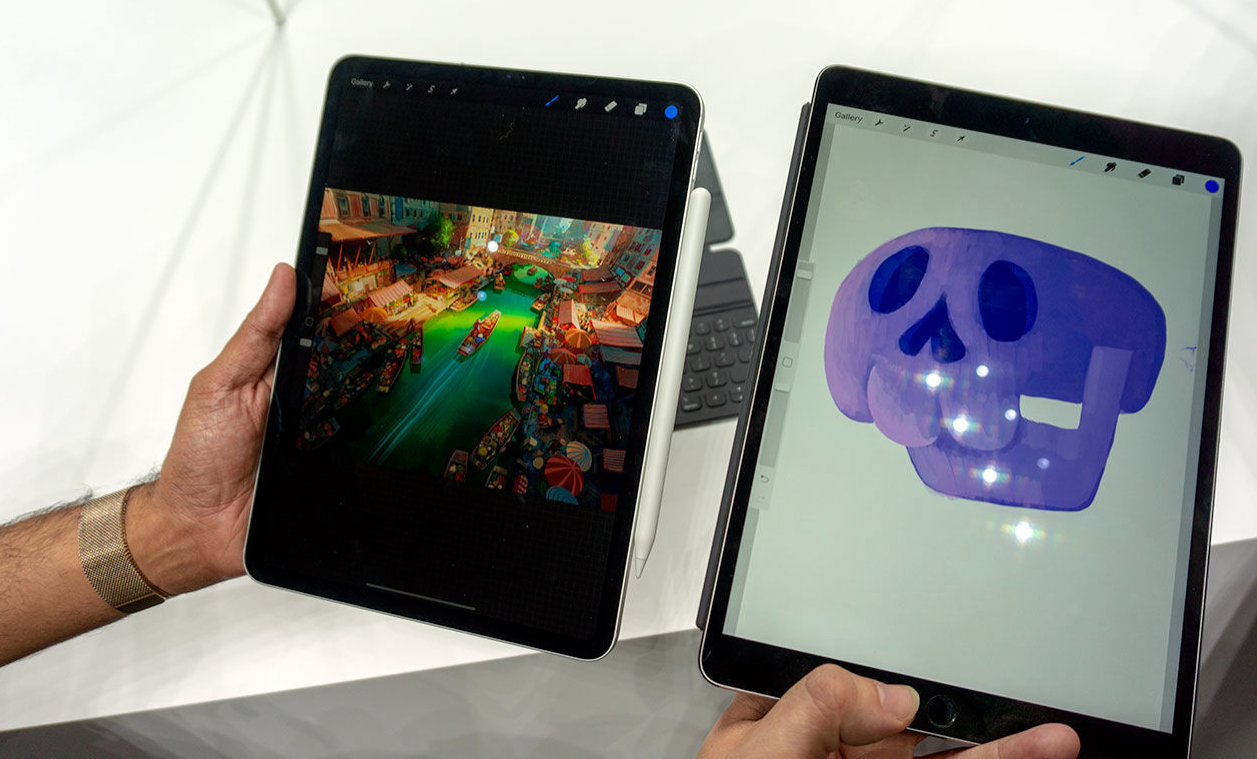
Content [Hide]
Release date of the new iPad Pro 2018
The new tablet model was announced at the Apple event on October 30 in Brooklyn and simultaneously became available for order on the Apple website. Transportation of tablets and the start of sales in stores fall on November 7, 2018.
Cost and Availability
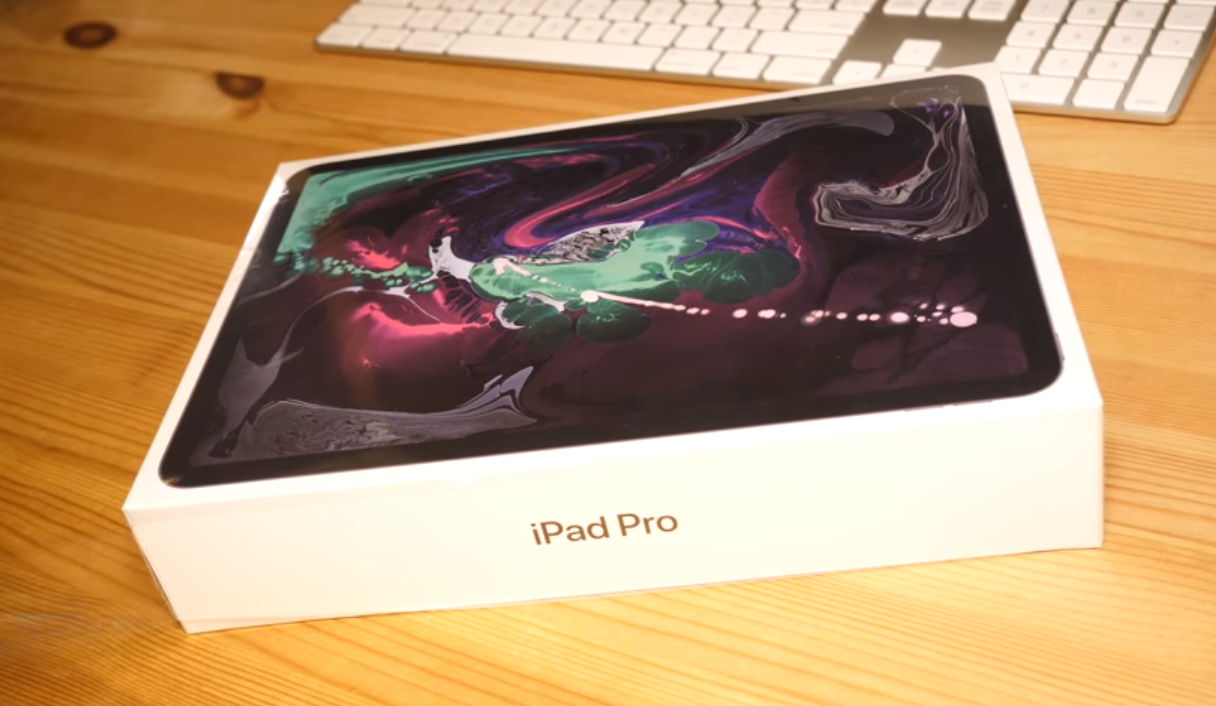
A review of the new model showed that instead of traditionally lowering the prices of the 2017 tablet model being released, Apple made a bold move by pricing this year's models so highly that the old version of the device now looks (almost) cheap compared to the new one. The average price of the 2018 11-inch version of the device starts at £769 / $799. The standard hard drive size is 64GB of storage. The popularity of the models will increase the fact that Apple gave users the opportunity to increase the storage size up to 1 TB.
Here is the full price list:
| Model | Price |
|---|---|
| iPad Pro 11in (64GB Wi-Fi) | £ 769 / $ 799 |
| iPad Pro 11in (256GB Wi-Fi) | £ 919 / $ 949 |
| iPad Pro 11in (512GB Wi-Fi) | 1,119 $/ 1,149 $ |
| iPad Pro 11in (1TB, WiFi) | £ 1,519 / $ 1,549 |
| iPad Pro 11in (64GB Cellular) | £ 919 / $ 949 |
| iPad Pro 11in (256GB Cellular) | £ 1,069 / $ 1,099 |
| iPad Pro 11in (512GB Cellular) | £ 1,269 / $ 1,299 |
| iPad Pro 11in (1TB Cellular) | £ 1,669 / $ 1,699 |
Compared to last year, Apple has experienced a pretty impressive price jump. In 2017, the 10.5-inch model was £619/$649, while the 12.9-inch model was £769/$799. At the same time, no equipment was attached to them, and they had their advantages and disadvantages, which entailed impressive changes.
Design
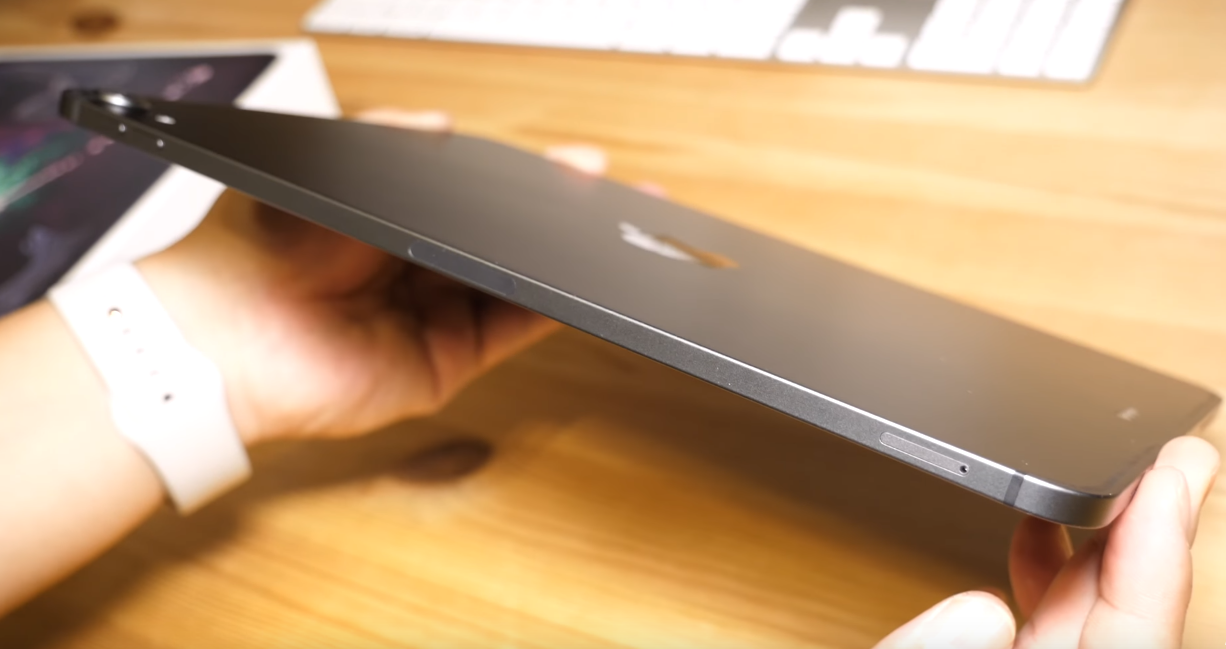
Apple completely redesigned the Pro series in 2018 to match the iPhone X series. The changes are extremely radical, a similar situation occurred with the iPhone X in 2017. This is a fairly drastic change and instantly made the 10.5-inch iPad Pro (which is still on sale) look old-fashioned.
The new model, which runs on iOS 12, has moved away from the previous design used on the iPad and earlier models, and the overall bezels have been replaced with a thinner version. And, although the device is still not full-screen, Apple is rapidly approaching this.
The corners of the display are curved. But the back wall is now curved, on the contrary, less. The slightly boxy look of the tablet itself is a bit like the old iPhone 5.
The Home button no longer takes up screen space. It's gone completely, and newer tablets now use Face ID instead of Touch ID. All these characteristics mean that the front of the device is almost completely shielded. This gives the impression that the screen takes up more space on the front of the tablet. Apple also managed to find a place for the TrueDepth camera on the panel. Unlike the hardware used on the iPhone X and iPhone XS, the TrueDepth system camera is not located on the top of the case. Instead, there is enough space along the edge of the case to allow the camera sensor to be mounted without encroaching on the main display area. This adds extra focus, depth and sharpness to photos as they are taken.
The device is only available in two colors: silver and space gray.
Display
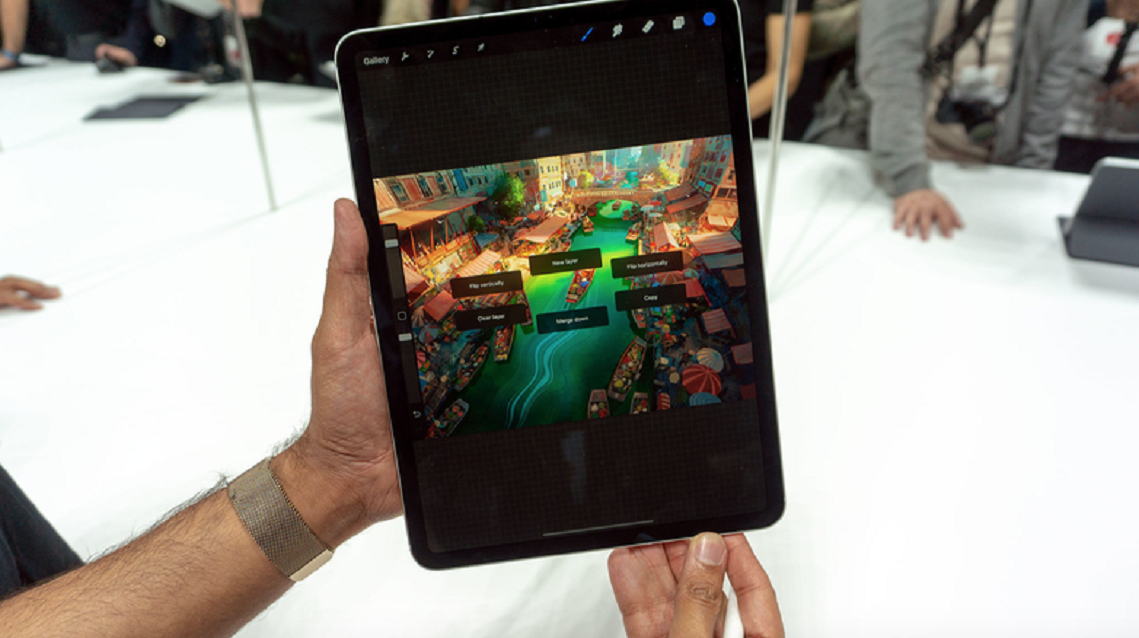
In addition to offering more screen real estate, the tablet also impresses with brightness and clarity. The resolution of the new screen is 2388×1668, which corresponds to Apple's standard density of 264ppi for medium and large tablet models. Wide color gamut, True-Tone and 120Hz ProMotion are also supported.
Liquid Retina display
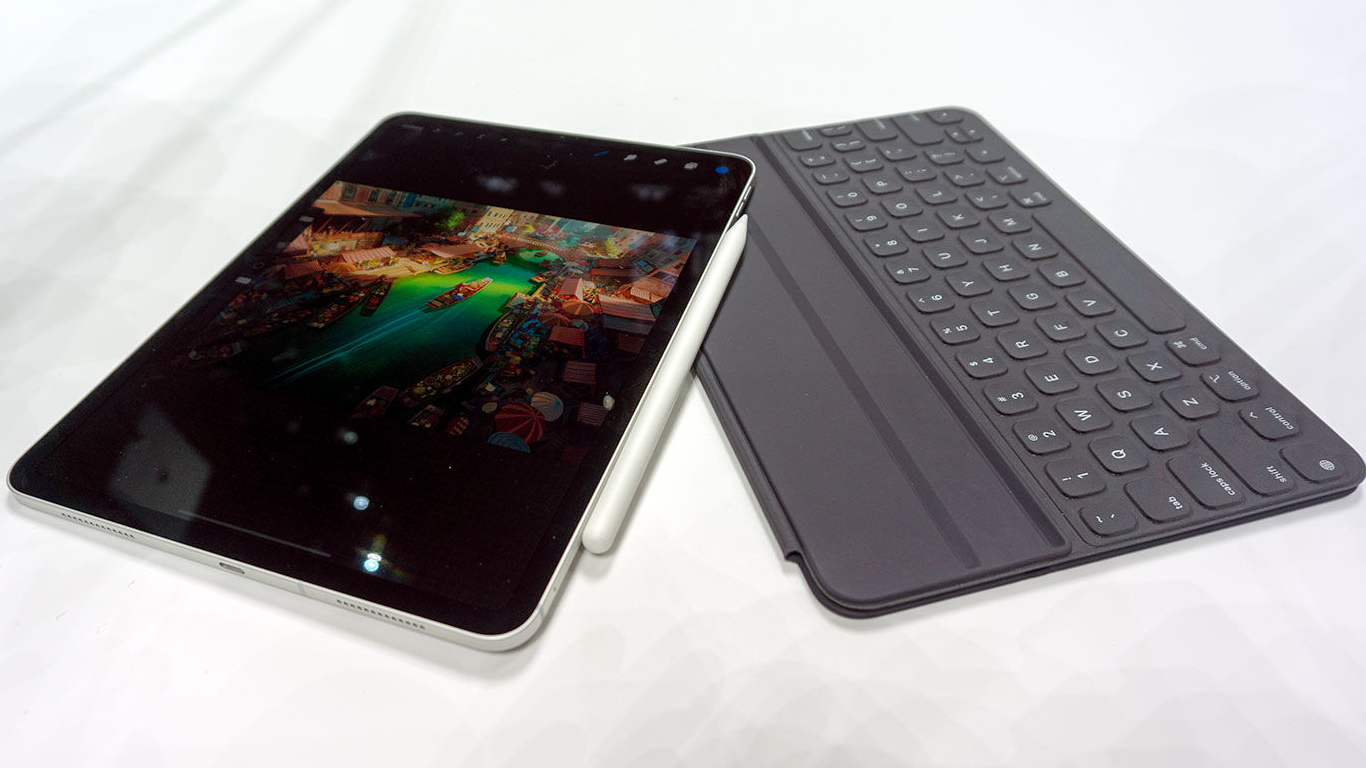
Apple's new interface is Liquid Retina like the iPhone XR, but the pixel density is the same as the 2017 iPad Pro 10.5in and much lower than the iPad mini 4 (which is meant to be brought closer to the face).
The 11-inch screen is another new diagonal size for tablets from Apple, made using a similar technology. There are currently five different display options: 7.9, 9.7, 10.5, 11 and 12.9. One can only imagine the confusion for inexperienced users this can cause.
The company promises that users will experience the benefits of the new screen: Apple offers the same pixel masking and anti-aliasing technology as in the popular iPhone XR models, with a new backlight design.
Dimensions
The new iPad is also slightly thinner than previous models. Its thickness is 5.9 mm.
iPad Pro 11 is incredibly light in the hand. The device is comfortable to hold in your hands for a long time. The device is great for drawing on the go.
Important changes
Finally - and most importantly - Apple removed the Lightning connector. The new device has a USB-C input, in the place of which there was a Lightning port.Changes like these mean more flexibility when used with third-party accessories, data connectivity, and the ability to charge external devices with the iPad. For example, now you can charge your iPhone this way. The USB-C connector also makes it easy to connect iPad Pro to an external 5K display. However, as reviews have shown, this will bring a lot of inconvenience to people using Lightning docks and headphones.
Speaking of headphones, the device also lacks a headphone jack. Users will either have to buy USB-C headphones, buy an adapter, or join wirelessly.
Additional functionality

The most interesting change in the iPad Pro 11 is the Face ID feature, which is able to recognize your face both in the sun and in the dark. Users are familiar with the feature from the iPhone X series, but this model has expanded it a bit. The feature works in both portrait and landscape orientations, as befits a device that is used in multiple configurations more than a phone. In addition to the fact that the Face ID option performs authentication, it also provides the same Animoji and MeMoji features as the iPhone X.
The new Apple Pencil can be used to unlock the tablet, after which the device will scan the user's face. This will be useful when using the machine in static mode.
The tablet can determine the geographic location of the user using GPS.
The model has bluetooth 5.0 installed. Previous devices in 2017 are equipped with version 4.2. Apple claims that wireless has gotten faster.
The newer models continue to use four speakers for sound reproduction, this time with bass and treble pairs. There is also Gigabit-class LTE connectivity, as well as eSIM support for cellular network access.
The power supply for the device is an 18-watt USB-C adapter that Apple has been working on lately, but it appears that the adapter cannot be purchased separately from the device. The device holds a charge for a long time. Battery life until the next recharge is rated at 10 hours.
Performance
Looking at the prices of the new iPad Pro 11, we can conclude that the equipment of the device is impressive. The processor of the device was changed from A10X in 2017 to A12X Bionic and is an improved version of the chip used in the iPhone XS, which was already ultra-fast. Apple claims that the A10X is 2.5 times faster than the old A8 chip (used in the iPad mini 4), while the A12X is 3 times faster.
The new A12X Bionic is based on a 7nm processor and consists of 10 billion transistors. Powerful 8-core chassis includes four cores for performance and four for efficiency. At the same time, the performance of a single core reaches 35 percent, and multi-core tasks work 90 percent faster. The tablet is perfect for both games and for watching movies and cartoons. Apple claims that the iPad Pro 11 is faster than 92 percent of all portable PCs sold over the past year. The chipset also uses the latest generation of neural engines capable of 5 trillion operations per second.
The graphics processing of the Apple-enabled tablet consists of a 7-core GPU that is said to be a thousand times faster than before and suitable for active gaming. The developers claim that the processor properties are equivalent to the graphics of the Xbox One S, while the size of the tablet is 94 percent smaller than the game console.
The storage size of the tablet is up to 1 TB.
Camera
The rear camera is designed for 12MP, but, oddly enough, the optical image stabilization function has disappeared. The camera is equipped with Smart HDR, a quad-LED True Tone flash with f/1.8 aperture, and an autofocus function. The tablet is still capable of recording 4K video at up to 60fps, with 120fps at 1080p and 240fps at the 720p slo-mo video setting. The front camera now offers portrait mode and is rated at 7MP.
Below is an example of how the camera takes pictures:
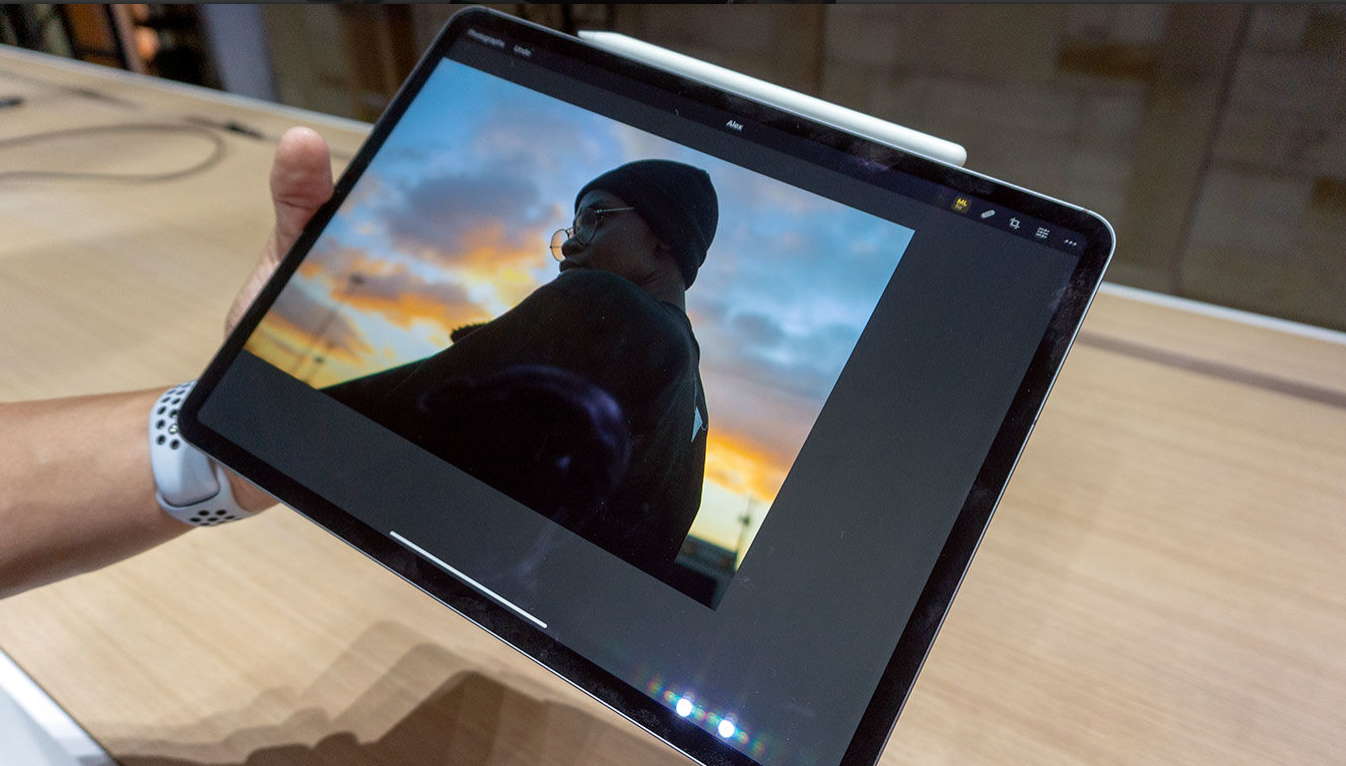
Using the iPad Pro
As with iPhone buyers last year, those who purchase the new iPad Pro will have to retrain their fingers and learn a new sign language due to the Home button being gone. (Of course, iPhone X-series users will already be familiar with these gestures.) But it shouldn't take long, just a few days.
The new device is equipped with face ID, which replaces the Touch-Button fingerprint scanner (which worked on the basis of the Home button). The removal of Touch ID also made it possible to use gestures that first appeared on the iPhone X, including swiping up to return to the home screen. There are many fans of Face ID on the iPhone XS, this feature is fast and reliable.But there is one potential problem with the new model, as The iPad is bigger than the iPhone. For example, when the tablet is on the table, it can be inconvenient to launch Face ID. The user may have to move on their own instead of holding the lighter iPhone to their face.
Apple Pencil 2
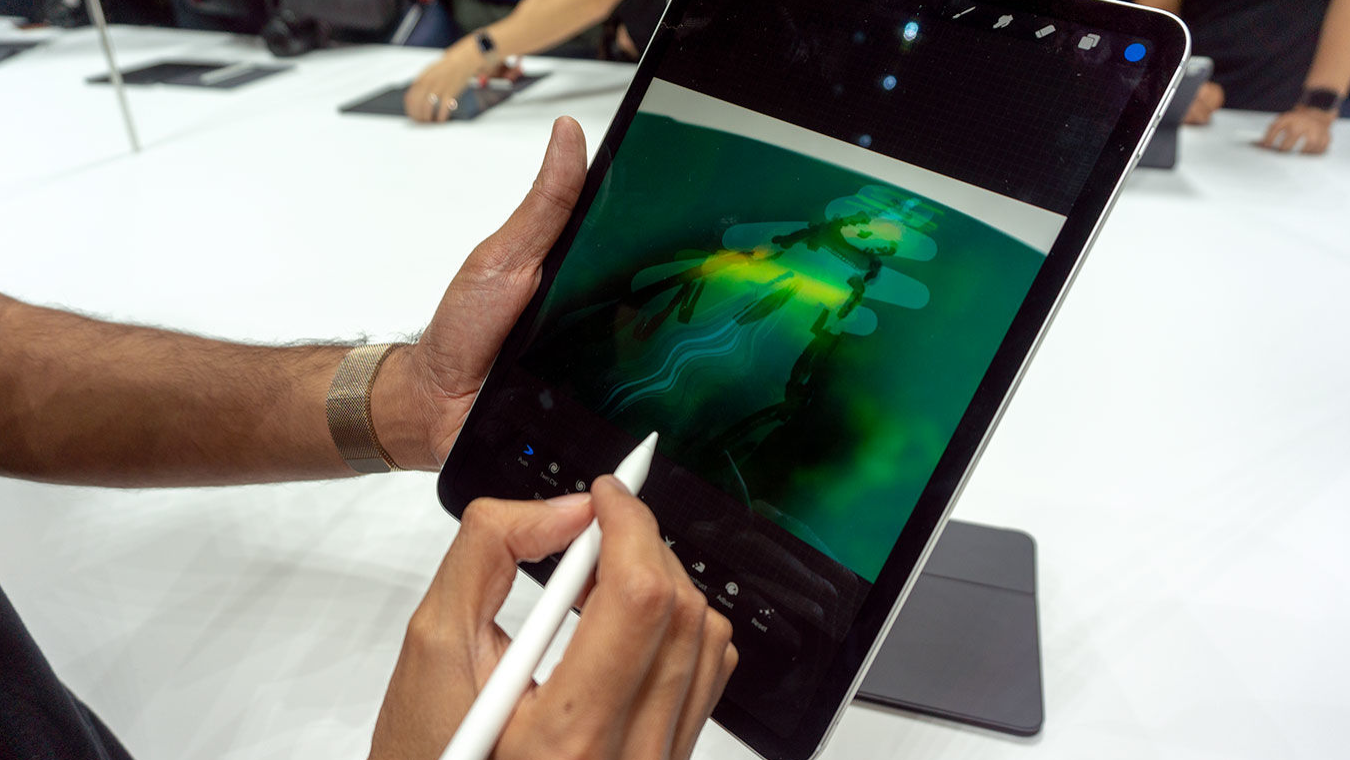
Accessory fans will be happy to hear that the Apple Pencil (2nd generation) is launching alongside tablet innovations. The rounded shape of the previous Apple Pencil has been changed to a flat one. Now the stylus made of lightweight materials will no longer roll off the desk.
There's a new magnetic connector for the handy new Apple Pencil that attaches neatly to one edge of the iPad Pro 11, uses sensors to automatically pair with your device, and charges wirelessly.
The new way of charging is a far cry from the previously awkward way that the pencil had to stick out of the Lightning port while charging. Combining charging and storing information, the stylus should always remain charged, and not, as usual, need to be charged, as was the case with past models.
Double-tapping the flat edge of a second generation pencil triggers special app functionality, but this will obviously depend on developer support. This will surely become a handy feature.
iPad Pro 11 Specifications
| Characteristics | Options |
|---|---|
| CPU | A12X Bionic, Neural Engine, M12 coprocessor |
| Memory | 64 GB / 256 GB / 512 GB / 1 TB |
| Display | 11in (2388x1668 at 264ppi) Liquid Retina LED Display with multi-touch, True Tone, ProMotion |
| Camera | 12Mp Rear camera, f/1.8, flash, 4K video, slow-mo at 240 fps 7Mp front camera, 1080p video, Retina Flash function, portrait mode, Animoji |
| Sound | 4 speakers |
| materials | Plastic, glass |
| Wireless networks | 802.11ac WiFi, Bluetooth 5.0 |
| SIM card | Nano-Sim/ESIM |
| Connector | USB-C port |
| Dimensions | 247.6mm x 178.5mm x 5.9mm |
| The weight | 468 grams |
| Cord length | 1m |
| Additional functions | Face ID, GPS, Apple Pencil 2, radio, Internet |
Tablet pros and cons
- Apple display is made using Liquid Retina technology;
- new backlight design;
- added Face ID function;
- fast productive processor;
- graphics processor.
- available in two colors only;
- no headphone port
- price;
- it is inconvenient to use Face ID with a large diagonal;
- there is no optical image stabilization function.
It was not worth expecting inexpensive tablets from the best gadget manufacturers, as they position themselves. A quick look at the device and its components makes it clear that despite its high cost, the tablet is worth considering. And, perhaps, soon the device will lead the rating of high-quality devices.
new entries
Categories
Useful
Popular Articles
-

Top ranking of the best and cheapest scooters up to 50cc in 2025
Views: 131649 -

Rating of the best soundproofing materials for an apartment in 2025
Views: 127688 -

Rating of cheap analogues of expensive medicines for flu and colds for 2025
Views: 124517 -

The best men's sneakers in 2025
Views: 124031 -

The Best Complex Vitamins in 2025
Views: 121938 -

Top ranking of the best smartwatches 2025 - price-quality ratio
Views: 114978 -

The best paint for gray hair - top rating 2025
Views: 113393 -

Ranking of the best wood paints for interior work in 2025
Views: 110318 -

Rating of the best spinning reels in 2025
Views: 105327 -

Ranking of the best sex dolls for men for 2025
Views: 104363 -

Ranking of the best action cameras from China in 2025
Views: 102214 -

The most effective calcium preparations for adults and children in 2025
Views: 102010




